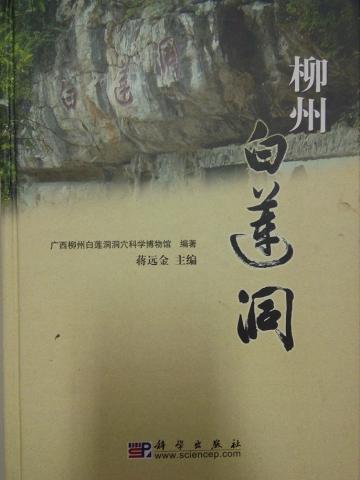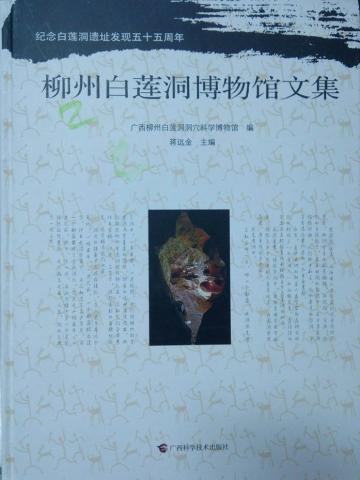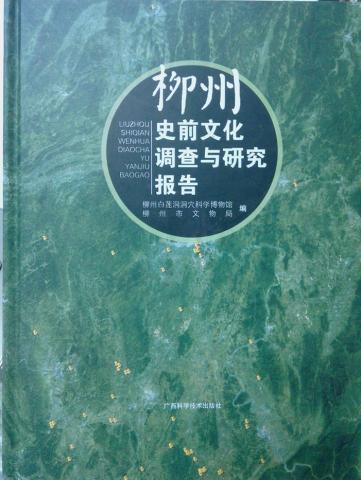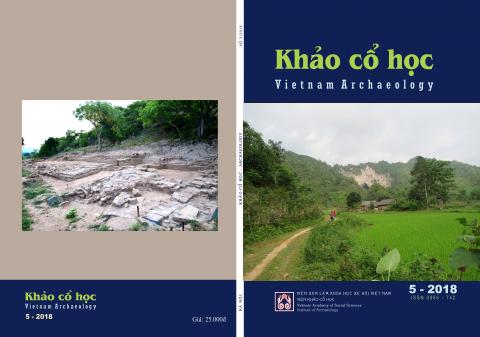-Tác giả: Nguyễn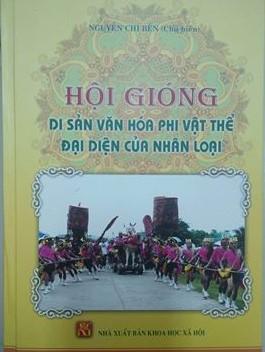 Chí Bền (Chủ biên)
Chí Bền (Chủ biên)
 Chí Bền (Chủ biên)
Chí Bền (Chủ biên)
- Nxb: Khoa học xã hội
- Khổ sách: 16 x 24cm
- Số trang: 592tr
- Năm xuất bản: 2017
- Khổ sách: 16 x 24cm
- Số trang: 592tr
- Năm xuất bản: 2017
Cuốn sách Hội Gióng - Di sản văn hóa phi vật thẩ đại diện của nhân loại tiếp cận hiện tượng văn hóa - tín ngưỡng này ở dạng tổng thể của một di sản văn hóa phi vật thể, nhằm miêu thuật hiện tượng văn hóa - tín ngưỡng liên quan đến người anh hùng làng Phù Đổng, giải mã các giá trị của hội Gióng trên các phương diện lịch sử, văn hóa, tín ngưỡng v.v.., đặt vấn đề bảo tồn và phát huy hội Gióng trong xã hội đương đại. Đồng thời, chúng tôi cung cấp các tư liệu chữ Hán, Nôm: sắc phong, thần tích, văn bia, hoành phi, câu đối ở các di tích thờ phụng người anh hùng làng Phủ Đổng, các tư liệu tiếng Pháp về hội Gióng để bạn đọc tham khảo.
Cuốn sách gồm 6 chương: 1/ Nhìn lại tình hình sưu tầm, nghiên cứu Hội Gióng; 2/ Không gian của Hội Gióng; 3/ Hội Gióng ở Đền Phù Đổng; 4/ Hội Gióng ở Đền Sóc; 5/ Hội Gióng ở một số làng xã khác; 6/ Giá trị và vấn đề bảo tồn, phát huy giá trị của Hội Gióng.
Xin trân trọng giới thiệu!
Cuốn sách gồm 6 chương: 1/ Nhìn lại tình hình sưu tầm, nghiên cứu Hội Gióng; 2/ Không gian của Hội Gióng; 3/ Hội Gióng ở Đền Phù Đổng; 4/ Hội Gióng ở Đền Sóc; 5/ Hội Gióng ở một số làng xã khác; 6/ Giá trị và vấn đề bảo tồn, phát huy giá trị của Hội Gióng.
Xin trân trọng giới thiệu!
Ngô Thị Nhung
- C
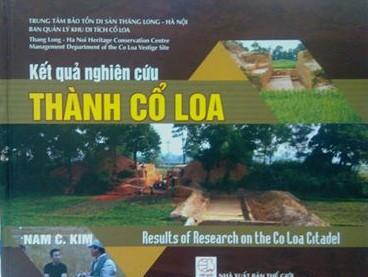 ơ quan chủ quản: Ban Quản lý Khu di tích Cổ Loa, Trung tâm Bảo tồn di sản Thăng Long - Hà Nội
ơ quan chủ quản: Ban Quản lý Khu di tích Cổ Loa, Trung tâm Bảo tồn di sản Thăng Long - Hà Nội- Nxb: Thế giới
- Khổ sách: 20,5 x 25cm
- Số trang: 131tr
- Năm xuất bản: 2018
- Tác giả: Nam C.Kim
từ năm 2007 đến nay, PGS.TS Nam C.Kim (Đại học Wisconsin - Madison, Hoa Kỳ) đã phối hợp với Trung tâm Bảo tồn di sản Thăng Long - Hà Nội và Viện Khảo cổ học tiến hành nghiên cứu thành Cổ Loa. Kết quả này đã giúp ông hoàn thành luận án tiến sĩ và cho ra đời ấn phẩm “The Origins of Ancient Vietnam” (Nguồn gốc Việt Nam cổ), nhà in Đại học Oxford, Hoa Kỳ, năm 2015.
Với mong muốn giới thiệu cho thế hệ hôm nay và mai sau cũng như bạn bè quốc tế hiểu về giá trị lịch sử - văn hóa của khu di tích Cổ Loa, Trung tâm Bảo tồn di sản Thăng Long - Hà Nội, Ban Quản lý khu di tích Cổ Loa đã phối hợp với tác giả, các đồng nghiệp của tác giả ở Viện Khảo cổ học, Nhà xuất bản Thế giới biên tập, dịch và xuất bản cuốn sách Kết quả nghiên cứu thành Cổ Loa (Results of research on the Co Loa Citadel) bằng tiếng Việt và tiếng Anh. Cuốn sách này được biên soạn trên cơ sở tóm lược nội dung của cuốn “The Origins of Ancient Vietnam”.
Trong kết quả nghiên cứu thành Cổ Loa tác giả đã đưa ra những nhận định, đánh giá khách quan dựa trên các kết quả điều tra, khai quật, sử dụng phương pháp nghiên cứu khoa học, đã trình bày khá toàn diện về quy mô, cấu trúc, chủ nhân xây dựng, niên đại và vai trò của Cổ Loa trong tiến trình lịch sử Việt Nam.
Nội dung cuốn sách bao gồm 6 chương: 1/ Tại sao Cổ Loa có ý nghĩa quan trọng; 2/ Nghiên cứu trước đây về Cổ Loa; 3/ Điều tra hệ thống phòng thủ từ năm 2007; 4/ Ước tình về xây dựng công sự; 5/ Nhà nước cổ đại; 6/ Di sản Cổ Loa đối với văn minh và lịch sử Việt Nam.
Xin trân trọng giới thiệu!
- Số trang: 131tr
- Năm xuất bản: 2018
- Tác giả: Nam C.Kim
từ năm 2007 đến nay, PGS.TS Nam C.Kim (Đại học Wisconsin - Madison, Hoa Kỳ) đã phối hợp với Trung tâm Bảo tồn di sản Thăng Long - Hà Nội và Viện Khảo cổ học tiến hành nghiên cứu thành Cổ Loa. Kết quả này đã giúp ông hoàn thành luận án tiến sĩ và cho ra đời ấn phẩm “The Origins of Ancient Vietnam” (Nguồn gốc Việt Nam cổ), nhà in Đại học Oxford, Hoa Kỳ, năm 2015.
Với mong muốn giới thiệu cho thế hệ hôm nay và mai sau cũng như bạn bè quốc tế hiểu về giá trị lịch sử - văn hóa của khu di tích Cổ Loa, Trung tâm Bảo tồn di sản Thăng Long - Hà Nội, Ban Quản lý khu di tích Cổ Loa đã phối hợp với tác giả, các đồng nghiệp của tác giả ở Viện Khảo cổ học, Nhà xuất bản Thế giới biên tập, dịch và xuất bản cuốn sách Kết quả nghiên cứu thành Cổ Loa (Results of research on the Co Loa Citadel) bằng tiếng Việt và tiếng Anh. Cuốn sách này được biên soạn trên cơ sở tóm lược nội dung của cuốn “The Origins of Ancient Vietnam”.
Trong kết quả nghiên cứu thành Cổ Loa tác giả đã đưa ra những nhận định, đánh giá khách quan dựa trên các kết quả điều tra, khai quật, sử dụng phương pháp nghiên cứu khoa học, đã trình bày khá toàn diện về quy mô, cấu trúc, chủ nhân xây dựng, niên đại và vai trò của Cổ Loa trong tiến trình lịch sử Việt Nam.
Nội dung cuốn sách bao gồm 6 chương: 1/ Tại sao Cổ Loa có ý nghĩa quan trọng; 2/ Nghiên cứu trước đây về Cổ Loa; 3/ Điều tra hệ thống phòng thủ từ năm 2007; 4/ Ước tình về xây dựng công sự; 5/ Nhà nước cổ đại; 6/ Di sản Cổ Loa đối với văn minh và lịch sử Việt Nam.
Xin trân trọng giới thiệu!
Ngô Thị Nhung
- T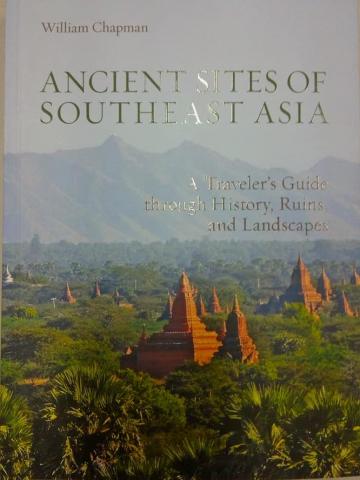 ác giả: William Chapman
ác giả: William Chapman
- Số trang : 312 pages
- Khổ: 170 x 232 mm
- Ngày xuất bản: 29-09-2017
- Nhà xuất bản: River Book
- Ngôn ngữ: Tiếng Anh
Địa điểm cổ đại của Đông Nam Á là hướng dẫn đầy đủ đầu tiên cho các địa điểm cổ và tàn tích khảo cổ học của khu vực Đông Nam Á. Được thiết kế để hỗ trợ khách du lịch mạo hiểm đến vùng này, cuốn sách cũng giới thiệu cho du khách nhiều di tích lịch sử và phong cảnh trên khắp 7 quốc gia: Indonesia, Việt Nam, Campuchia, Thái Lan, Lào, Myanmar (Miến Điện) và Malaysia. Ngoài nền tảng và mô tả các địa điểm riêng lẻ, hướng dẫn cung cấp các mẹo cần thiết cho khách du lịch và danh sách đọc và bảng thuật ngữ mở rộng. Kết quả của hơn hai mươi năm nghiên cứu và thăm viếng của tác giả, nhà khảo cổ và nhà bảo tồn kiến trúc William Chapman, Địa điểm cổ đại Đông Nam Á cung cấp một cái nhìn tổng quan ngắn gọn về nhiều di tích lịch sử và các địa danh liên quan của khu vực. Hơn 450 hình minh họa và 150 bản đồ mang lại nhiều địa điểm vào cuộc sống.
Xin trân trọng giới thiệu!
 ác giả: William Chapman
ác giả: William Chapman- Số trang : 312 pages
- Khổ: 170 x 232 mm
- Ngày xuất bản: 29-09-2017
- Nhà xuất bản: River Book
- Ngôn ngữ: Tiếng Anh
Địa điểm cổ đại của Đông Nam Á là hướng dẫn đầy đủ đầu tiên cho các địa điểm cổ và tàn tích khảo cổ học của khu vực Đông Nam Á. Được thiết kế để hỗ trợ khách du lịch mạo hiểm đến vùng này, cuốn sách cũng giới thiệu cho du khách nhiều di tích lịch sử và phong cảnh trên khắp 7 quốc gia: Indonesia, Việt Nam, Campuchia, Thái Lan, Lào, Myanmar (Miến Điện) và Malaysia. Ngoài nền tảng và mô tả các địa điểm riêng lẻ, hướng dẫn cung cấp các mẹo cần thiết cho khách du lịch và danh sách đọc và bảng thuật ngữ mở rộng. Kết quả của hơn hai mươi năm nghiên cứu và thăm viếng của tác giả, nhà khảo cổ và nhà bảo tồn kiến trúc William Chapman, Địa điểm cổ đại Đông Nam Á cung cấp một cái nhìn tổng quan ngắn gọn về nhiều di tích lịch sử và các địa danh liên quan của khu vực. Hơn 450 hình minh họa và 150 bản đồ mang lại nhiều địa điểm vào cuộc sống.
Xin trân trọng giới thiệu!
Ngô Thị Nhung
Bìa mề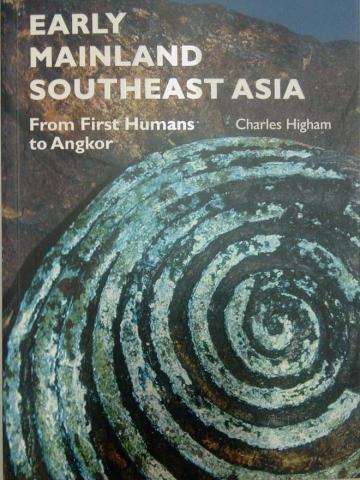 m: 456 trang
m: 456 trang
 m: 456 trang
m: 456 trang
Nhà xuất bản: River Books Press Dist AC (ngày 25 tháng 7 năm 2014)
Ngôn ngữ: tiếng Anh
ISBN-10: 6167339449
ISBN-13: 978-6167339443
Kích thước sản phẩm: 6,7 x 1,1 x 9,1 inch
Ngôn ngữ: tiếng Anh
ISBN-10: 6167339449
ISBN-13: 978-6167339443
Kích thước sản phẩm: 6,7 x 1,1 x 9,1 inch
Nội dung cuốn sách: tổng hợp các khám phá khảo cổ học mới nhất ở Đông Nam Á . Cùng với các cuộc khai quật của riêng mình ở Đông Bắc Thái Lan, Charles Higham đánh giá quan trọng về văn hóa của Thời đại đồ sắt đã làm nảy sinh những nền văn minh ban đầu ở Đông Nam Á. Cuốn sách này là tài khoản mới nhất của các nền văn hóa cổ đại của một khu vực rộng lớn và đa dạng về mặt địa lý và là một bản tóm lược độc đáo, cần thiết cho tất cả những ai quan tâm đến khu vực này.
Xin trân trọng giới thiệu!
Xin trân trọng giới thiệu!
Ngô Thị Nhung
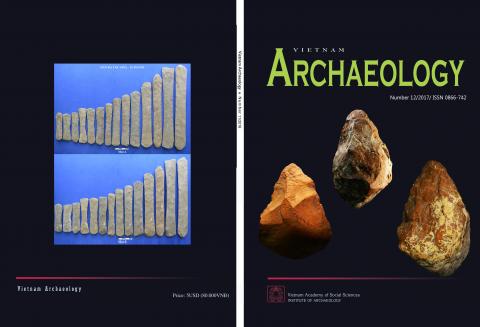
| Contents | |
Page |
|
| BÙI VĂN LIÊM, HOÀNG THÚY QUỲNH |
2 |
| New discoveries and studies of Vietnamese archaeology in 2017 | |
| NGUYỄN KHẮC SỬ | 13 |
| Early Paleolithic industry of An Khê and primitive period in Việt Nam |
|
| NGUYỄN GIA ĐỐI | 26 |
| Holocene environmental and cultural contexts in the Hồng-river delta | |
| LẠI VĂN TỚI | 42 |
| The Phùng Nguyên-culture layer at the Đình Tràng site (Hà Nội) | |
| TRẦN QUÝ THỊNH, NGUYỄN NGỌC QUÝ | 58 |
| Some new perceptions of the metal age sites in the Đồng Nai province | |
| NGUYỄN GIANG HẢI, PHẠM ĐỨC MẠNH | 65 |
| Prehistoric lithophones at Lộc Hòa - “National treasures” of Vietnam | |
| TRỊNH HOÀNG HIỆP, NAM C. KIM | 78 |
| Research results of the Cổ Loa citadel (2007 - 2014) | |
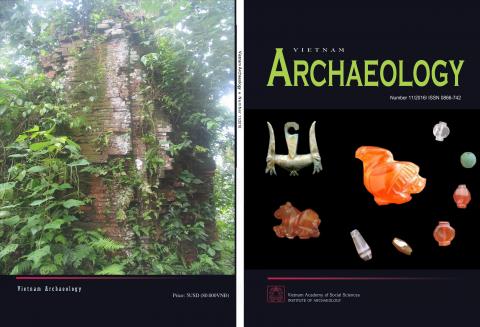 Khổ 19x27cm; Dày: 100 trang
Khổ 19x27cm; Dày: 100 trang
| CONTENTS | |
Page |
|
| NGUYỄN GIA ĐỐI, LÊ HẢI ĐĂNG, PHAN THANH TOÀN, A.KANDYBA An excavation at Mang Chiêng cave, Cúc Phương National park |
2 |
| TRƯƠNG ĐẮC CHIẾN The process of controlling the Southeastern Việt Nam salt-marsh area during pre - and protohistoric periods |
16 |
| NGUYỄN GIANG HẢI Vitality of the Đông Sơn culture through some types of archaelogical sites |
34 |
| NGUYỄN KIM DUNG, ĐẶNG NGỌC KÍNH, PHẠM THỊ NINH, LÊ HẢI ĐĂNG East - west trade interaction through Sa Huỳnh-culture ornaments |
42 |
| NGUYỄN VĂN QUẢNG Sites of Champa temples/towers in Thừa Thiên Huế |
65 |
| NGUYỄN MINH KHANG Some architectural ruins and artifacts of the Hòa Lai group of temples/towers in Ninh Thuận |
87 |
| BÙI VĂN LIÊM, HOÀNG THÚY QUỲNH New discoveries and studies of Vietnam archaeology in 2016 |
95 |
Trang
Copyright © 2016 by khaocohoc.gov.vn.
Thiết kế bởi VINNO
Tổng số lượt truy cập: 10405467
Số người đang online: 19

